Birth name Gholamreza Takhti Name Gholamreza Takhti Children Babak Takhti Years active 1950–1966 Parents Rajab Khan Takhti | Height 1.8 m Nickname(s) Jahan Pahlevan Role Wrestler | |
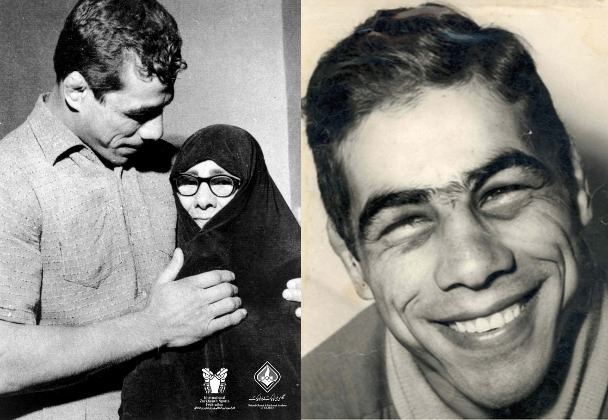 | ||
Weight 79 kg (174 lb) to 97 kg (214 lb) Died January 7, 1968, Tehran, Iran Spouse Shahla Tavakoli (m. 1966–1968) Similar People Babak Takhti, Shahla Tavakoli, Ismet Atli, Moniru Ravanipor | ||
Gholamreza Takhti receive medal from Shah and fabrication of Iranian Historians !
Gholamreza Takhti
Gholamreza Takhti (Persian: غلامرضا تختی, August 27, 1930 – January 7, 1968) was an Iranian Olympic Gold-Medalist wrestler and Varzesh-e Bastani practitioner. Popularly nicknamed Jahān Pahlevān ("The World Champion") because of his chivalrous behavior and sportsmanship (Javanmardi in Iranian culture), he was the most popular athlete of Iran in the 20th century, although dozens of Iranian athletes have won more international medals than he did. Takhti is still a hero to many Iranians. He is listed in the FILA wrestling hall of fame.
Contents
- Gholamreza Takhti receive medal from Shah and fabrication of Iranian Historians
- Gholamreza Takhti
- Early life
- Career
- Character on the wrestling mat
- Social and political activisms
- Death
- References
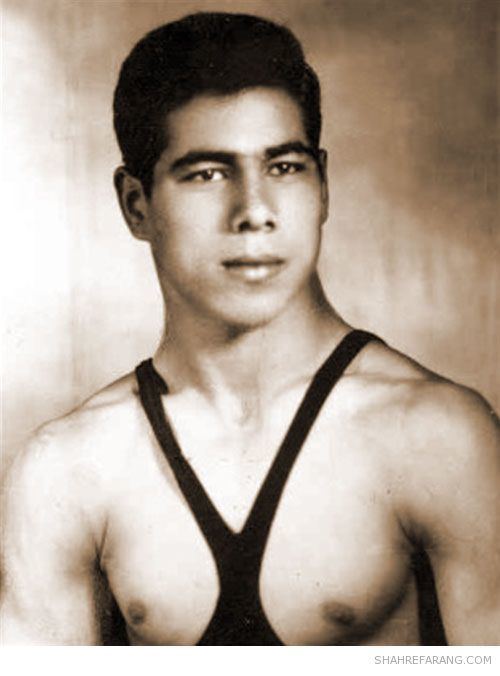
Early life

Takhti, the youngest child of an Iranian Azerbaijani family was born in Khaniabad neighborhood of south Tehran. on August 27, 1930. At the age of 15, he entered Poulad Club in Southern Tehran and was trained in wrestling. He soon left Tehran to become a manual laborer in the oil-rich city of Masjed Soleiman. When he was called up for military service, his potential in wrestling was discovered and he began to train seriously soon after he was recruited as an Iran Railways employee in 1948.
Career
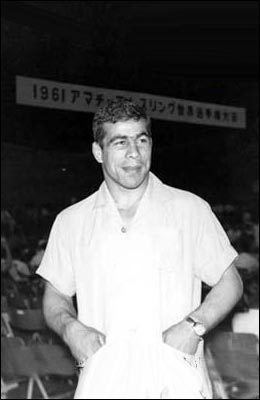
Takhti won his first Iranian championship in 1950, and on his first trip abroad in 1951, he won a silver medal at the world freestyle championships in Helsinki - the first international medal ever gained by an Iranian wrestler. One year later in 1952, he won another silver medal again in Helsinki, this time in 1952 Summer Olympics.
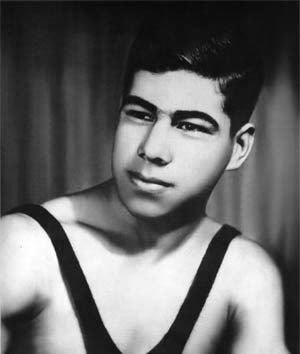
The subsequent highlights of his career were an Olympic gold medal in 1956 (Melbourne) and World Championships in 1959 (Tehran) another silver in the 1960 Rome Olympics and 1961 World Championships (Yokohama). His Olympics career finished with one Gold & two silver medals. He did however finish fourth in the 1964 Tokyo Olympics as well.
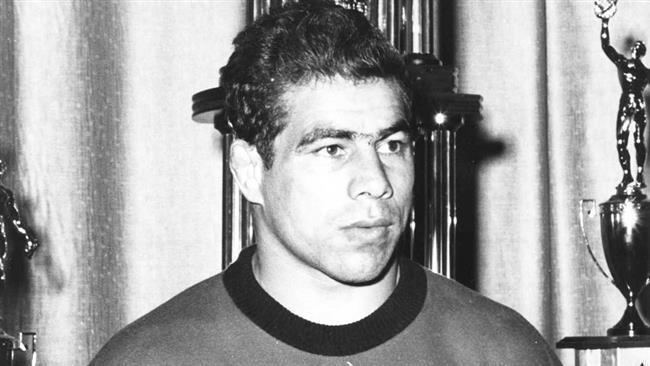
Takhti started as a middleweight wrestler in the 79 kg and 87 kg categories, as he was getting heavier, he decided to move up to the next weight, 97 kg, for the Tokyo Olympics in 1964. He was unable to catch a medal and he was placed 4th.
Character on the wrestling mat
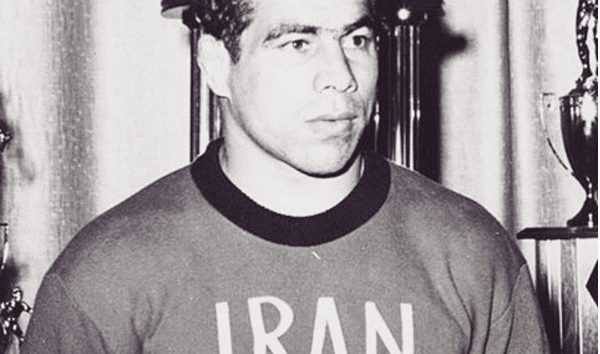
Takhti tended to act fairly when competing against rivals during his career, something which originated from traditional values of Zurkhaneh, a kind of heroic behaviour that epitomizes chivalrous qualities known as Javanmardi.
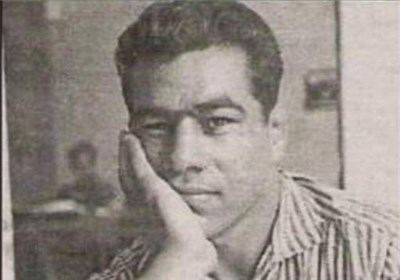
For instance, he once had a match with Russian wrestler Alexander Medved who had an injured right knee. When Takhti found out that Medved was injured, he avoided touching the injured leg and tried to attack the other leg instead. He lost the match, but showed that he valued honorable behavior more than reaching victory.
Another example of his character comes from a match in Moscow. After defeating the then-world champion Anatoli Albul, Takhti saw the sorrow on the face of Albul's mother. Takhti went to her and said, "I'm sorry about the result, but your son is a great wrestler." She smiled and kissed him.
Social and political activisms
Takhti was known for his anti-regime views. He was a pro-Mossadegh activist and member of Second National Front and his death sparked a number of anti-Shah demonstrations.
In 1962, a terrible earthquake occurred in Bou'in-Zahra in western Iran, killing 45,000. Takhti was deeply touched by the suffering. Already one of Iran's biggest stars, he began to walk one of the main avenues of Tehran, asking for assistance for the victims. He inspired other champions to follow in his footsteps, and thousands gave to alleviate the suffering.
Death
Takhti was found dead in his hotel room on January 7, 1968. The Iranian government officially proclaimed his death a suicide. However, some claim that he was murdered because of his political activities against the Pahlavi regime, accusing SAVAK, the Iranian intelligence agency at that time. Because he was a national hero his funeral, organized by Hossein Towfigh, editor in chief of the late Towfigh magazine, drew hundreds of thousands of mourners. Towfigh magazine issued a special edition of their popular weekly magazine where they caricatured Takhti with angel wings flying high above the throngs of Iranian mourners at his own funeral with a caption that read "Don't cry for me, cry for your own plight." This was a direct reference not only to the plight of the Iranian people under the dictatorial regime of the Shah, but also showed Takhti's democratic beliefs, one of the reasons cited for his mysterious death. Towfigh magazine was shut down by the Shah for several months after printing this cartoon. He is buried at Ebn-e Babooyeh cemetery in Southern part of Tehran, near Shahr-e Ray, where he is commemorated every year by his fans.
After the 1979 political upheaval in Iran, many of the Savak officials, including its chief torturer Bahman Naderipour commonly known by his masked name Mr. Tehrani, were put on trial by the new regime. In an open court hearing published in the then-open newspapers (Keyhaan and Ettela'at were the two most popular outlets reporting the court hearings at the time), Tehrani publicly confessed in the court that Takhti was arrested due to his support of and collaboration with 'Nehzat Azadi' (a moderate anti-government movement lead by Mr. Bazargan and Ayatollah Taleghani during the Shah's rule); Tehrani openly described in the hearings the gruesome torture of Mr. Takhti in one of Savak's notorious torture chambers in Tehran; one of Tehrani's key phrases, removing any doubts on circumstances of Takhti's death, was "این قدر او را زدیم سرش اب لمبو شده بود " we beat him so much his head was mushy".
He was survived by his wife and son, Babak Takhti, an author and translator. The movie Takhti, begun by Ali Hatami and finished by Behrooz Afkhami, examined some of the theories about Takhti's death.
